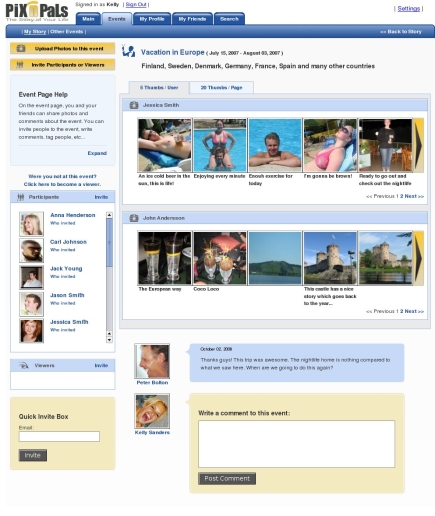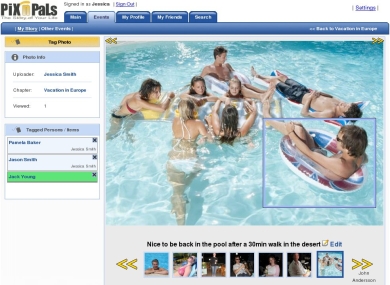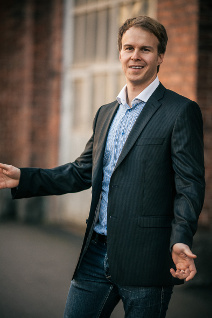This post is about my own startup (Disruptive Media) and how we pivoted and where it took us. I have split it into 3 parts, which all describe a specific phase in my company’s life. I am not going to go too deeply into all the lessons learned, but instead focus on the story and leave the many lessons for coming posts.
In 2007 I founded Disruptive Media Ltd. together with my colleague Jarl Törnroos, who I know since the late 80’s when we went to school together. Both of us have had programming as a hobby and written 2 computer games together back in 1998; one poker game and one labyrinth game. However, after that we have not had any experience working together until we founded our company.
In 2006 I was playing around with lots of different ideas to found a company. One was an improvement of a private photosharing website Jarl had built a few years before as a hobby project. Jarl’s website was used by all his friends and it was kind of used to document the life of our group of friends. All albums were group albums, usually created for crazy parties and other events.
More and more people were asking if they could use Jarl’s website and the existing users seemed happy. Sadly, it was designed only for one private group of friends, where everyone could see all the albums, so it would not have scaled. Therefore, I proposed building an improved version of this, which would allow anyone to setup an own private gallery with group albums. The idea was not only to target groups of friends, but also sport teams and similar.
The idea grew in our minds for about half a year before we got started. I was still studying at TKK, which I had just continued after an over 2 year long adventure in the Finnish mobile game company Sumea, which during my time was acquired by Digital Chocolate. Jarl was also working, so there was little time for our own project, other than brainstorming ideas every now and then. At those days we had a third member in our team, who dropped off before summer, during which we had taken some time off to start hacking for real.
Our idea had changed a bit from the initial one. Our idea was now a service to document your life (or the story of your life) in a collaborative way with your friends. We had dropped the idea of groups, since there are no real boundaries between groups of friends. The idea was that any user can create events and invite their friends to these events, so that everyone can upload their photos to the same event. All these events a user belongs to, form the story of that user’s life.
In addition to this, we had an innovative friend/contact list, where you became friends with anyone you had been to an event with. We thought it was a killer idea to quickly build up a social network that so many companies had tried to do but failed.
Early usability tests and interviews had revealed that some users would like to publicly share images from events. Events and pictures in them were private only to members of that event. So, we came up with another “great invention” that users could publish any events or images from their story on their public profile. This way, users who never took any photos could also share their story with the world.
The name of the service became PiX’n’Pals, after several long discussions. We would not have wanted to brand it with anything so tightly linked to pictures, but all good names for story, events, etc. were taken. Finally, we decided that since the service is going to be mainly about pictures in the beginning anyway, we can as well just go with name PiX’n’PaLs. If we manage to get a proof of concept, we are probably going to seek funding and probably even relaunch with a new brand.
Our plan was to make money from selling print products, like photo books, from the photos. We also saw the photo book as a value adding feature that would attract even more users. Additionally, we were going to have ads and possibly premium accounts at some point.
We should have concentrated on the core idea and launched a Minimum Viable Product (MVP) to test the concept, as we initially had planned even though we never had heard of the concept of an MVP. We kept building more features, since we always felt that “the service needs X because Flickr has it too” or “he/she said he needs that feature”.
In addition to all the features, we also felt that we needed an FAQ, long help texts, take a tour, etc. All this took a lot of time to make, but that was not the worst of it. All the features and extra stuff turned out to be a liability later when we wanted to make changes, since they needed to be updated every time. We even hired a lawyer to write our terms of use and privacy policy for the first version. I will probably write another post on this topic soon, to list all the reasons why features are poison and so dangerous!
Time spent in “feature hell” was away from implementing other planned things, such as good tracking of user behavior and support to run A/B tests to optimize funnels. Our tracking was something quickly put together before launch, only measuring vanity metrics, not really showing whether we are making progress or not.
I had read a lot about A/B testing and optimizing conversions, but did not know that it is the most important thing in our business. Optimizing virality, by measuring how many users one other user invites (virality coefficient), is the path to success, unless there are other ways to acquire customers at a decent cost. Of course, this means that the goal of all product decisions regarding design, features, etc. should be to improve the coefficient. This must be verified with an A/B test to be sure that progress is made. When the virality coefficient is something above 1, the next thing to optimize would be revenue from a customer. These activities must take place after a quiet beta launch, but the processes and infrastructure should be in order to be able to conduct experiments.
Another area where we could have spent more time and money on was graphics (and UI & UX in general). In the beginning we were kind of on the right track with mockups and wireframes, even doing usability tests, but the time pressure made us cut corners and just get it out. More features required more graphics and more complex UI, which required more time from us. It usually takes a lot of time for an artist to do good looking graphics and engineers are rarely top artists. The worst possible combination is when an engineer draws graphics in a hurry.

It was time to launch. Little were we aware of facebook, which was getting more and more popular and also slowly opening up in Finland. One of our big mistakes was not to try out all the other services, to fully understand what the existing services were already capable of. We had read about facebook and probably signed up a user account, but couldn’t imagine that people would really start using it a few months after that.
We realized pretty soon that PiX’n’PaLs did not grow exponentially. In the beginning friends started to use it and they invited their friends and so on, but the branching factor of the tree became really low after a few nodes (These were people we did not know at all).
We started collecting feedback from users and pop out more features and improvements. Generally a good idea, however, all these improvements were targeted to existing users. Instead, all improvements should have been directed by measurements of the virality coefficient.

For new users the service was visually “empty” and there were not really much to do, unless you started to create events and upload photos. Additionally, the service had lost its focus when we had implemented more and more features, like messaging and stuff that was not around the core idea.
Measurements showed us it was growing linearly with more people coming in every now and then from different sources, like blogs writing about us, etc. These users created some viral spread, but with a vitality coefficient way below 1, cooling off pretty quickly.
When I look back at the post it feels like we did everything wrong. We did lot’s of mistakes that we learned a lot from, but we also did some things right. Lots of companies spent even more time trying to get everything perfect before launch and most of them burned a lot more cash. For us this was definitely not the end of the story. I’ll tell you what happened in the next post coming soon…
